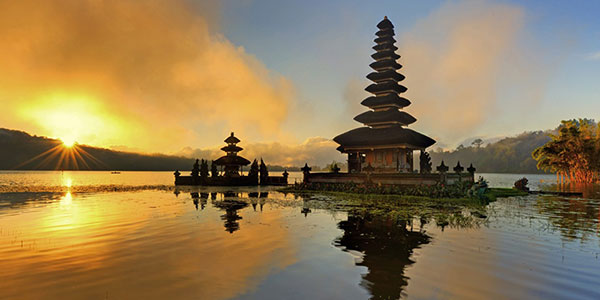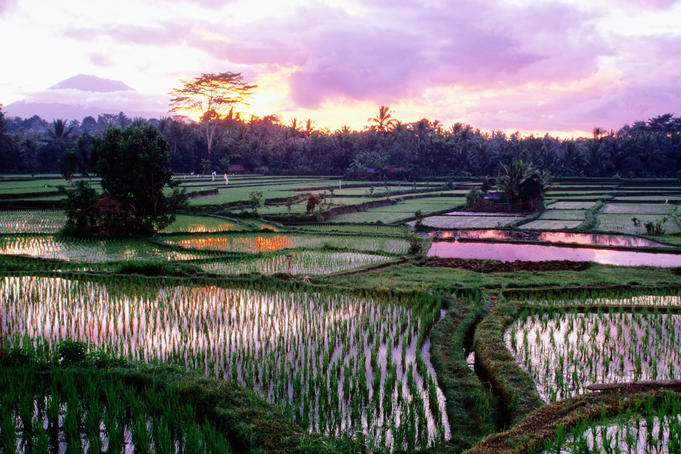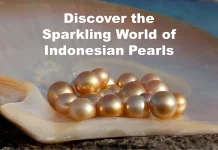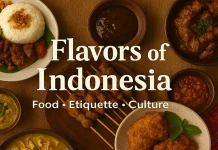Bali is known to be the “island of the gods“, due to to its resemblance to one’s imagination of what would be a tropical paradise. The island in fact offers lush tropical nature, picturesque beaches and a deeply spiritual culture. In fact, so popular is this island that it counts for 80% of Indonesia’s tourism.
History
According to Nagarakertagama, an east Javanese chronicle, in the 4th century Bali was conquered by the Hindu Javanese kingdom of Majapahit, infusing the island with its elegant arts and court culture. When the empire began to collapse in the 16th century, the Javanese priestly aristocracy took refuse in Bali, fleeing the advance of Islam, and Balinese Hinduism underwent a renewal under the inspiration of the priest-poet Dhanghyang Nirartha, also known as Pedanda Sakti Wawu Rauh (the newly arrived and powerful high priests). Nirartha traveled all over Bali, teaching and establishing many temples. One of the temples he built was known as Tanah Lot.
The Balinese, anthropologists suggest, are an amalgamation of a number of people. The Chinese coming from the North, the Indian and the Arabs from way West, and other groups coming directly to Bali or by way of Java. They become what is now known as native Balinese.
Geography
Bali is an island about 5,600 square kilometers and one of 27 provinces of the Republic of Indonesia. Although Indonesia comprises over three hundred ethnic groups and over three thousand populated islands, Bali is the only province that is also at once an island and at the same time an ethnic group, and this gives the Balinese a heightened sense of their distinctiveness as they try to find their identity as modern Indonesians.
Religion and Belief
Balinese Hinduism is vibrant and syncretic. At its most ancient core is animism, bound with threads of tantric Buddhism and ancestor veneration that probably originated in southern China. Though originating from India, the brand of Hinduism known and practiced in Bali differs significantly from the one found in India. Instead of mysticism or philosophy, the emphasis of Bali’s Hinduism is more in rituals and dramatic features, allowing the religion and its practice to be incorporated into daily life of Balinese peasants. These rituals and dramatic features have been intricately woven into the lives of Balinese to the extent that one cannot separate the religious life of Bali from its daily life. These rituals most often take place in a temple, the most important structure in the Balinese culture.
The Balinese sum up their view of life in three fundamental relationships (also known as Tri Hita Karana): to the spiritual world, to the world of human beings and to the natural world around them. They also believe that these worlds interpenetrated each other, and that it is the responsibility of human being to make sure that this interaction is balanced and harmonious. The Balinese accomplish this through ritual, expressed in the form of religious offerings. The Balinese classify their ritual in five sorts (Panca Yadnya): those for gods, for the spirit of dead body, for the initiation of priests, for the rites passage in the growth of human beings, and for the demons.
Society/Community System
Bali is society of hamlets clustered around temples. In Bali as a culture organism, the villages are its vital organs, and the network of temples its nervous system. The Balinese have a highly detailed religious culture that an order influence and integrates almost every aspect of their life from birth to death, including such aspects as agriculture and economic system.
Although individual mystic practices exist in Bali, religious devotion is generally a communal affair, and this is the basis of the great cohesiveness of Balinese village life. Every Balinese village has several temples to which all the villagers belong, and in a certain sense a village can be defined as the congregation of a group of temples. Because of this communal responsibility for the care of the gods, a village must maintain its spiritual purity.
Customs and Traditions
- Names: Basically the Balinese only have four first names. The first child is Wayan or Putu, the second child is Made or Kadek, the third is Nyoman or Komang and the fourth is Ketut. The fifth, sixth, seventh, eighth and ninth will be another Wayan, Made, Nyoman, Ketut and Wayan again.
- Childhood: The Balinese certainly love children and they have plenty of them to prove it. Coping with a large family is made much easier by the policy of putting younger children in the care of older ones.
- Marriage: Every Balinese expects to marry and raise a family, and marriage takes places at a comparatively young age. Marriages are not, in general, arranged as they are in many other Asian communities although strict rules apply to marriages between the castes. There are two basic forms of marriage in Bali – mapadik and ngorod. The respectable form, in which the family of the man visit the family of the woman and politely propose that the marriage take place, is mapadik. The Balinese, however, like their fun and often prefer marriage by elopement (ngorod) as the most exciting option. Of course, the Balinese are also a practical people so nobody is too surprised when the young man spirits away his bride-to-be, even if she loudly protests about being kidnapped. The couple goes into hiding and somehow the girl’s parents, no matter how assiduously they search, never manage to find her. Eventually the couple re-emerges, announce that it is too late to stop them now, the marriage is officially recognized and everybody has had a lot of fun and games. Marriage by elopement has another advantage apart from being exciting and mildly heroic-it’s cheaper.
- Men & Women: There are certain tasks clearly to be handled by women, and others reserved for men. Social life in Bali is relatively free and easy. In Balinese leisure activities the roles are also sex differentiated. Both men and women dance but only men play the gamelan.
- Death & Cremation: There are ceremonies for every stage of Balinese life but often the last ceremony-cremation-is the biggest. A Balinese cremation can be an amazing, spectacular, colorful, noisy and exciting event. In fact it often takes so long to organize a cremation that years have passed since the death. During that time the body is temporarily buried. Of course an auspicious day must be chosen for the cremation and since a big cremation can be very expensive business many less wealthy people may take the opportunity of joining in at a larger cremation and sending their own dead on their way at the same time.
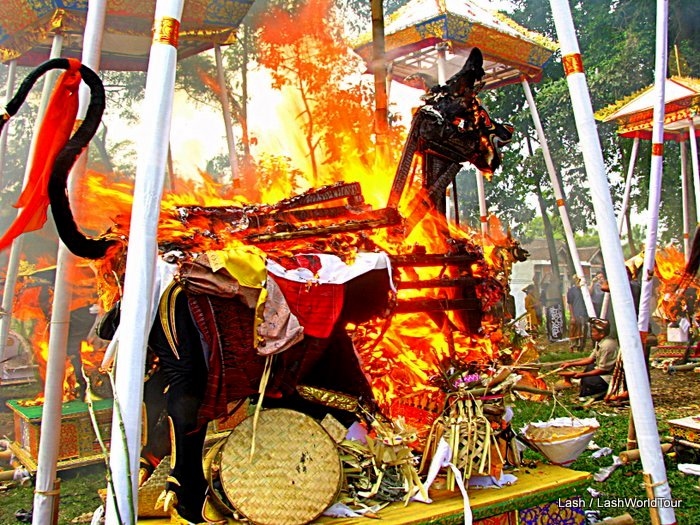
- Festivals: Festival as an important feature of the Balinese life occurs on fixed dates according to the Balinese Calendar. There are annual cycle and every six months celebrations of holidays, life-cycle ceremonies of a Balinese person since the time inside the mother’s womb followed in stages up until marriage and the most important of the Balinese ritual is that includes funeral rites and cremation. To maintain and preserve every aspect of the Balinese’s cultural life, annual festivals have been held by the Provincial Government, such as : the Annual Art Festival. This festival usually takes place in every Saturday middle of June to Saturday middle of July with exhibitions and performances of various kind of artworks and cultural achievements.
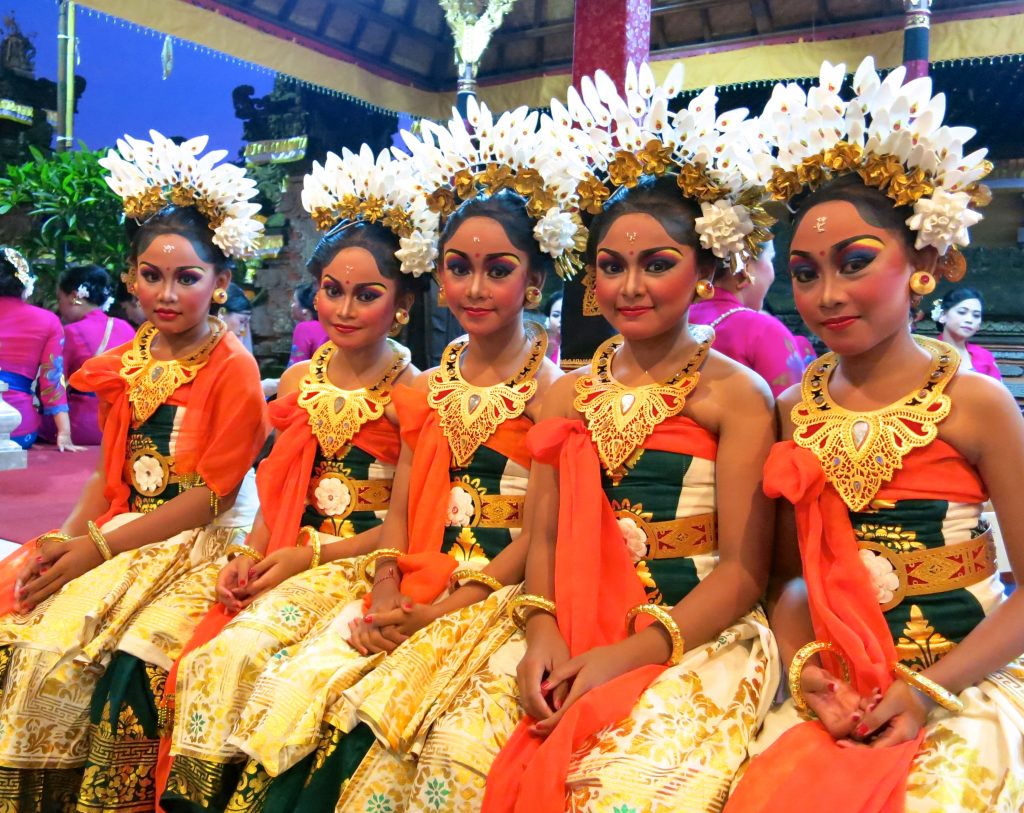
Caste System
Balinese society is founded on the Hindu caste system, although in a somewhat simpler form than that practiced in India. In Bali, there are four castes; Sundras, the peasants who comprise over 90% of the population, Wesias, the warrior caste, which also includes traders and some nobility, Satrias, the caste of kings, and Pedanas, the holy men and priests (brahman). The caste of a person is indicated by their title; Ida Bagus for Brahman, Anak Agung or Dewa for Satrias, and I Gusti for Wesias.
Each caste has its own language, and a separate dialect exists to enable someone to address one of unknown caste to avoid disrespect. The national language of Indonesia, which is taught in schools simplifies communication somewhat, although at the expense of cultural diversity.
Agriculture System
Nature has endowed Bali with ideal conditions for the development of agriculture. The divine volcanoes, still frequently active, provide the soils with great fertility. Rainfall and numerous mountain springs supply many areas of the island with ample water year-round. And a long dry season brings plentiful sunshine for many months of the year. Bali is, as a result, one of the most productive traditional agricultural areas on earth, which has in turn made possible the development of a highly intricate civilization on the island since very early times.
Wet-rice cultivation is the key to this agricultural bounty. In well-watered areas where wet-rice culture predominates, rice is planted in rotation with so-called palawija cash crops such as soybeans, peanuts, onions, chili peppers and other vegetables. In the drier region corn, taro, tapioca and beets are cultivated.
Rice is, and has always been, the staff of life for Balinese. Personified as the “divine nutrition” in the form by the form of the goddess Bhatari Sri, rice is seen by the Balinese to be part of an all-compassing life force of which humans partake and an important social force. The phases of rice cultivation determine the seasonal rhythm of work as well as the division of labor between men and women within the community. Balinese respect for their native rice varieties in expressed in countless myths and in colorful rituals in which the life cycle of the female rice divinity ore portrayed-from the planting of the seed to the harvesting of grain. Rice thus represent “culture” to the Balinese in the dual sense of culture and cultus-cultivation and worship.
The rituals of the cycle of planting, maintaining, irrigating, and harvesting rice enrich the cultural life of Bali beyond a single staple can ever hope to do. At the beginning of planting time, after the water buffaloes walk the rice fields several times to prepare them, ceremonies are held to carry the young stems of rice that have been nurtured in a special nursery. On each section of the rice fields, the corner nearest to Gunung Agung will receive the honor to be the first place to receive the young stems of rice. The water level in each section is perfect; little streams of water effortlessly flow from the highest section up on top of the hill to the very bottom section. The planning and responsibility of the irrigation and planting schedule are arranged through subak, a Balinese system that ties together rice cultivation with its water temple system.
Irrigation Cooperatives System (Subak)
Historical evidence indicates that since the 11th century, all peasants whose fields were fed by the same watercourse have belonged to a single subak or irrigation cooperative. This is a traditional institution, which regulates the construction and maintenance of waterworks, and distribution of life-giving water that they supply. Such regulation is essential to efficient wet-rice cultivation on Bali, where water travels through very deep ravines and across countless terraces in its journey from mountains to the sea.
The head of the subak is chosen in a consensus system by the peasant. Regularly the elected representatives from all subak cooperatives in one region meet to decide, with the help of priests, the distribution of the water flows and irrigates all the fields in this parts of Bali. They oversee the maintenance of dams and weirs that divide the water, select the types of seed to plant and fertilizer to use and resolve conflicts that arise among neighbors.
Perhaps the most important of all is the determination of when to plant and when to harvest, a decision controlled by 1,000-year-old religious traditions. Some year’s back, farmers followed a government decree and everyone planted at the same time: fields at the tops of the mountains had too much water, those below not enough; plagues of locusts and mice ate what little rice did grow. Disgruntled with the poor harvest brought about by scientists and bureaucrats, farmers returned to their religion for guidance.
Head of Subak had to follow the tradition and also enrich himself by studying all the latest information on fertilizers, insecticides and seeds. The success of his subak is rooted in following the proper religious ceremonies. But, with the increased number of harvest each year (two and sometimes three), the farmers have not changed the way they worship the gods of planting and harvest, just the frequency.
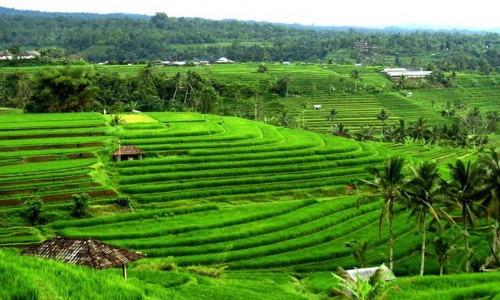
Art
The very soul of Bali is rooted in religion and is expressed in art forms that have been passionately preserved over the centuries. It seems that almost every person is an artist, spending free time applying skills and images which have been passed down from generation to generation and grasped from a very young age.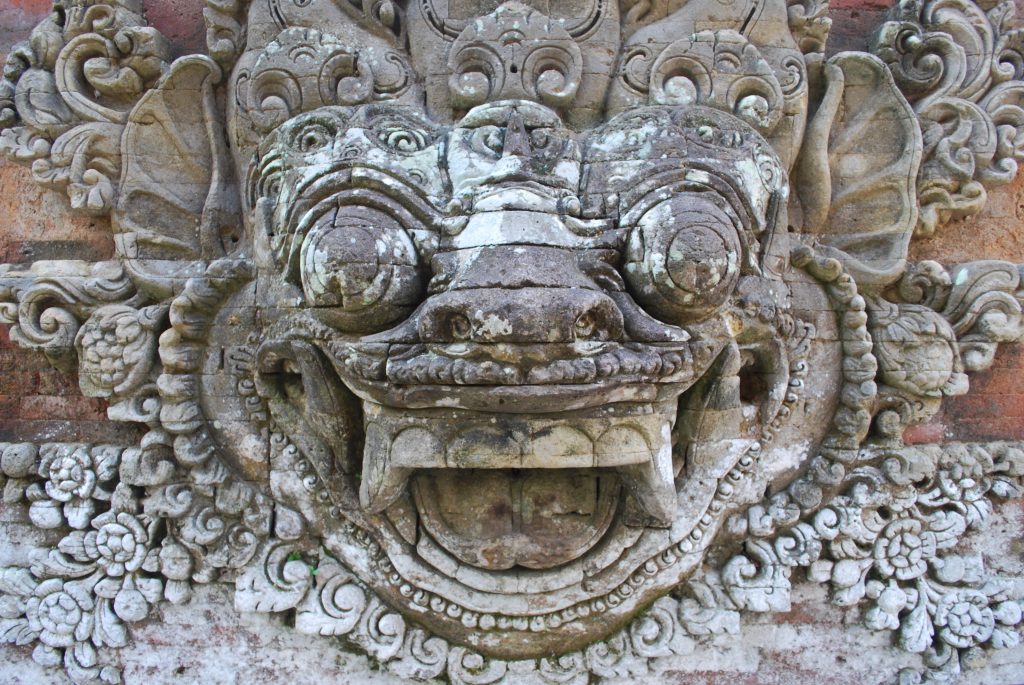
Buying souvenirs from Bali here >>


